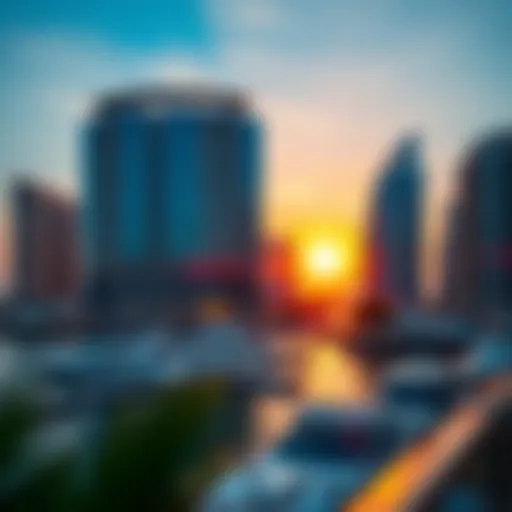In-Depth Look at Bin Kalaib Building in Dubai
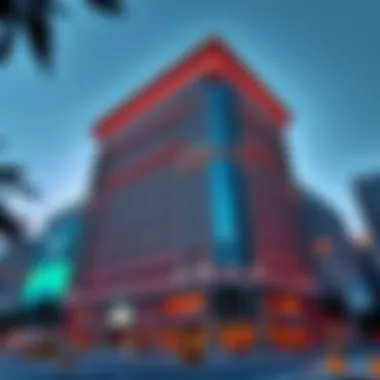
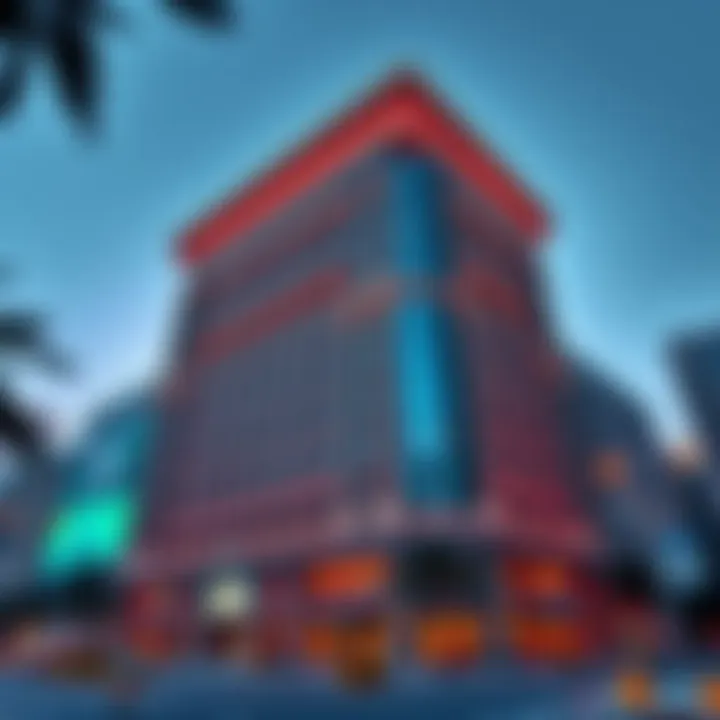
Intro
The Bin Kalaib Building, an iconic structure in the heart of Dubai, stands as a true testament to the city’s rich architectural heritage. As one strolls through its surroundings, the stories imbued within its walls come to life, revealing the cultural and social intricacies of the neighborhood. This article will unpack not just the physical attributes of the Bin Kalaib Building but also its relevance to the community it serves and the legacy it aims to uphold.
Life in Dubai isn't simply about modern skyscrapers and luxury; it’s the harmony of tradition and innovation that makes the urban landscape vibrant. The Bin Kalaib Building, while utterly distinctive, also fits snugly into the city's tapestry of design and culture.
In the sections that follow, we will explore the various aspects that make this building a jewel of architectural expression, analyzing key features such as neighborhood characteristics, community life, and the interactions that define its place in this bustling metropolis.
Prelude to Bin Kalaib Building
The Bin Kalaib Building is a cornerstone in Dubai's architectural landscape, acting as a bridge between centuries of rich culture and modern design principles. As the city experiences a surge of development, understanding this edifice becomes crucial not only for those who reside in the vicinity but also for any visitor eager to appreciate the intricacies of Dubai’s architectural narrative. It’s not merely a structure; it's a testament to the evolution of urban life and community integration.
Overview of the Structure
The Bin Kalaib Building, with its distinctive silhouette, embodies an aesthetic that resonates with both traditional Emirati culture and contemporary artistic expressions. Its façade features intricate geometric patterns that echo Islamic architecture, yet is complemented by sleek lines and materials that signal modernity. The use of glass and metal is prevalent, capturing sunlight during the day, transforming the structure into a beacon of light as dusk falls.
This careful blend of styles showcases thoughtful architectural planning. Each element serves a purpose – from enhancing energy efficiency to fostering natural ventilation, making the building not just visually appealing but also eco-friendly. The attention to detail in each design decision makes the Bin Kalaib Building a precise case study in marrying function with form.
Significance within Dubai
The importance of the Bin Kalaib Building transcends its physical features; it plays a vital role in Dubai’s community identity. As a focal point for both locals and tourists, it symbolizes the city’s rapid modernization while still honoring its heritage. Its strategic location attracts a diverse crowd, contributing to local business growth and cultural exchange.
Moreover, the building is frequently selected as a venue for various events, fostering community relationships and enhancing its cultural significance. Events hosted here often cater to both educational and recreational audiences, allowing residents to engage and celebrate their heritage in a contemporary space.
"A building gains identity not just from its design but from the people it serves and the stories it nurtures."
In sum, the Bin Kalaib Building represents more than just bricks and mortar; it’s emblematic of Dubai’s commitment to a harmonious blend of new and old, making it an essential landmark in the city's ever-evolving narrative.
Architectural Style and Design Elements
The architectural style and design elements of the Bin Kalaib Building serve as a narrative thread that connects the past, present, and future of Dubai’s urban landscape. It is essential to grasp how these aspects not only enhance the aesthetic appeal of the structure but also convey deeper cultural meanings. The building’s design approach integrates modernity with traditional motifs, resulting in a harmonious blend that respects the historical context of its surroundings while catering to contemporary needs. Recognizing these elements is vital for homeowners, visitors, planners, and architects who wish to appreciate or replicate such architectural sophistication in their projects.
Exterior Features
The exterior of the Bin Kalaib Building is nothing short of an architectural dialogue. From the moment one sets eyes on it, the striking facade draws admiration. The use of geometric patterns resonates strongly with traditional Arabic designs, creating a visual rhythm that is captivating yet grounded. Concrete meets glass in a conversation of solidity and transparency, allowing natural light to filter in and illuminate the interior spaces. This marriage of materials not only boosts energy efficiency but also showcases the evolving architectural trends within the emirate.
Upon closer inspection, decorative elements dominated by mashrabiya screens are another hallmark of the exterior features. These lattice-like woodwork patterns serve both functional and aesthetic purposes, providing privacy while allowing for airflow. This is an intelligent design choice in a city known for its extreme temperatures, combining functionality with artistry.
Some key exterior features:
- Geometric Patterns: Embodies both modern and traditional aesthetics.
- Material Usage: The integration of glass and concrete enhances visual appeal.
- Mabrabiya Screens: Improves air circulation and provides privacy.
Interior Design Characteristics
As one steps inside the Bin Kalaib Building, there’s a distinct shift in atmosphere. The interior is a realm that invites comfort and elegance, guided by a cohesive design philosophy. A neutral color palette dominates the walls and floors, creating an inviting ambiance that allows the playful interplay of light and shadow to take center stage.
One of the hallmarks of the interior space is its focus on functionality blended with style. Open-plan layouts accommodate flexibility in use, while thoughtfully placed furnishings encourage interaction among visitors and residents alike. Local artisans have left their imprint through handcrafted decor, further enriching the living experience within the building.
Notable interior characteristics include:
- Neutral Color Palette: Grants a warm, welcoming feel.
- Flexible Layouts: Adapts to varying needs and lifestyles.
- Handcrafted Decor: Celebrates local craftsmanship and culture.
In essence, the Bin Kalaib Building epitomizes how architectural style and design elements can reflect cultural identities while supporting modern urban living. Understanding and admiring these aspects provides valuable insights for anyone keen on appreciating or contributing to the architectural narrative of Dubai.
"Architecture should speak of its time and place, but yearn for timelessness." - Frank Gehry
Learning from structures like the Bin Kalaib Building enables future designs to resonate with both their heritage and progressiveness, fostering a deeper connection to the community they serve.
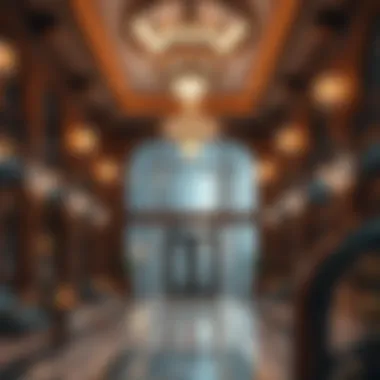
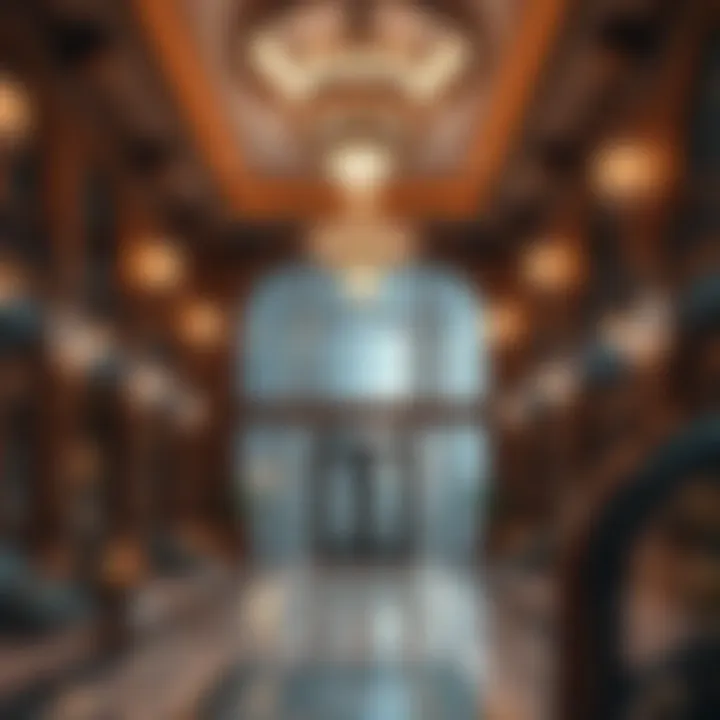
For further reading, resources like Britannica and Wikipedia offer insightful background information on architectural styles.
Historical Context
Understanding the historical context of the Bin Kalaib Building is essential to grasp the architectural narrative of Dubai. This structure does not merely exist as a standalone edifice; it's a representation of the city's evolving identity and cultural tapestry. From its inception to the present day, the Bin Kalaib Building has been influenced by various factors that illustrate not just architectural trends but also socio-economic changes and cultural shifts within Dubai.
Timeline of Construction
The journey of the Bin Kalaib Building began in the early 2000s, a time when Dubai was transforming into the global metropolis it is today. Official first stone was laid in 2005, amid much anticipation. Construction crews worked tirelessly, blending traditional craftsmanship with modern techniques. By 2010, the building was officially opened to the public, signifying an era of architectural innovation in the heart of the city.
A closer look at the timeline reveals several pivotal moments:
- 2005: Groundbreaking ceremony held, signaling the start of construction.
- 2007: Structural framework completed, showcasing the building's unique design.
- 2010: Grand opening attended by city dignitaries, tourists, and residents.
This timeline is more than just numbers; it encapsulates the dedication and vision behind the Bin Kalaib Building. The continuous efforts marked by engineering advancements and local artistry contribute richly to Dubai’s architectural lineage.
Cultural Influences
When we peel back the layers of concrete and glass, we see how deeply the cultural influences shape the Bin Kalaib Building. It serves as a canvas reflecting the city's traditions while embracing modernity. Inspired by the vast history of Emirati design, architects incorporated elements from traditional Arabic architecture. This is evident in features such as intricate geometric patterns and mashrabiya (wooden latticework), which not only offer aesthetic beauty but also practical solutions for climate control and privacy.
Moreover, the construction process integrated local artisans, which helped preserve traditional craftsmanship. Neighborhood artists contributed murals that tell stories of local heritage. These artistic additions infuse the building with a sense of belonging and community.
In many ways, the Bin Kalaib Building stands as a testament to the melting pot of influences: it is a place where the past dialogues with the present, creating a dynamic cultural intersection.
"Architecture is the thoughtful making of space."
– Louis Kahn
This quote resonates deeply with the way Bin Kalaib communicates a sense of place and history, inviting visitors to reflect on its narrative while engaging with the vibrant life that surrounds it.
Through the lens of historical context, we see that every corner of the Bin Kalaib Building has a story to tell—stories rooted in time yet reaching toward the future.
Role in the Community
The Bin Kalaib Building serves as more than just an architectural wonder in Dubai; it stands as a vital part of the community. Understanding its role unveils how this structure intertwines with the lives of the people living and working in its shadows. It lays a foundation for cultural dialogues, economic opportunities, and social interactions, all of which contribute to the rich tapestry of Dubai's urban life.
Community Engagement
The engagement of the Bin Kalaib Building with the local community reflects a symbiotic relationship that benefits both the building and its surroundings. Regular workshops and forums attract residents, enabling discussions on urban issues, local heritage, and environmental sustainability. Such community-driven events foster a sense of belonging and ownership, encouraging residents to not only appreciate the building but also actively participate in its ongoing legacy.
Local artists often find inspiration within its walls, leading to collaborative art exhibitions that showcase the creative talent of the Emirate's youth. By hosting these events, the Bin Kalaib Building does not just display architectural beauty; it becomes a canvas where local history and creativity amalgamate. It’s a spot where knowledge meets tradition.
Moreover, strategic partnerships with educational institutions bring school groups for guided tours. Students learn about architectural techniques and Dubai's cultural evolution, instilling pride and awareness in future generations.
"Buildings like Bin Kalaib are not merely structures; they are live platforms for community spirit and cultural education."
Events Hosted at Bin Kalaib
The events held at the Bin Kalaib Building cater to a diverse audience, turning it into a hub of activity. Many significant cultural festivals and social gatherings take residence here, showcasing the dynamic fabric of Dubai.
Some notable events include:
- Cultural Celebrations: Throughout the year, festivals celebrate traditional Emirati culture, including poetry readings, art displays, and craftsmanship showcases. These gatherings are designed to honor the heritage while promoting intercultural dialogue.
- Business Conferences: As a nod to its architectural prowess, the Bin Kalaib is frequently home to seminars and conferences on innovation and sustainability. Here, thought leaders and innovators discuss vital topics that shape Dubai’s future.
- Community Markets: On the weekends, local vendors set up stalls outside the building, offering handmade crafts and organic produce. This market not only provides economic benefits but also strengthens community ties.
The events not only activate the space but also make it accessible to a broader audience, inviting those who might not typically engage with architectural discourse. By doing so, the Bin Kalaib Building reinforces its role not only as an attractively designed structure but as a cornerstone of community development.
Surrounding Landscape and Amenities
Understanding the surrounding landscape and amenities near the Bin Kalaib Building is essential to grasping its overall significance within Dubai. The area isn't just about a single architectural wonder; it reflects a larger tapestry of urban life, blending nature, community spaces, and efficient transport systems. This combination enhances the livability and attractiveness of the location, making it a focal point for both residents and visitors alike.
Parks and Green Spaces
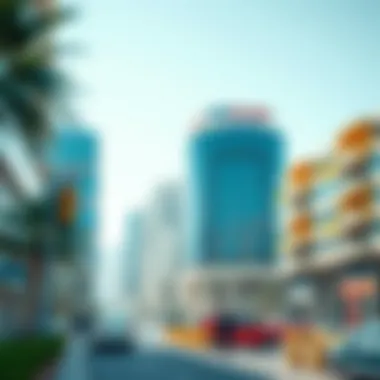
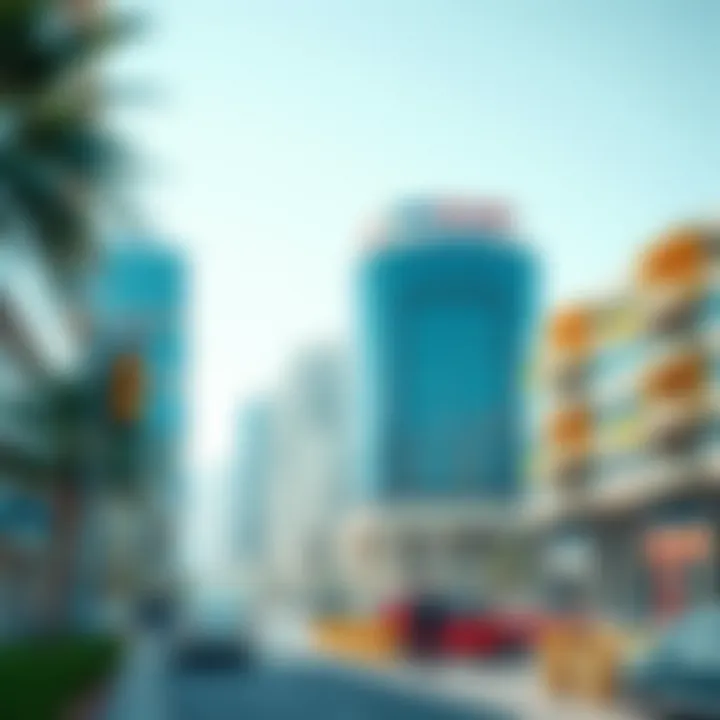
The proximity of several parks and green spaces plays a vital role in enriching the experience of being near the Bin Kalaib Building. These areas serve as oases amidst the urban hustle, where individuals can unwind, socialize, and engage in recreational activities. Parks like the Zabeel Park and Al Wasl Park provide a breath of fresh air, featuring walking trails, picnic spots, and playgrounds.
Benefits of Green Spaces
- Enhanced Aesthetics: Green parks frame the building with nature, creating a picturesque environment.
- Recreational Opportunities: They offer spaces for various activities, from jogging to family gatherings.
- Social Interaction: Parks serve as community hubs, fostering connections among locals and visitors.
The existence of these parks also contributes to environmental sustainability, improving air quality and providing habitat for local wildlife. This consideration illustrates a balanced approach to urban planning—one that harmonizes community needs with ecological responsibiity.
Transport Connectivity
Another essential aspect of the surrounding landscape is its transport connectivity. The Bin Kalaib Building is well-integrated into Dubai's extensive public transport network, making it easily accessible for everyone. The Dubai Metro station nearby adds tremendous value, allowing residents and visitors to navigate the city with ease.
Key Features of Transport Connectivity
- Metro Access: Close proximity to the metro lines offers efficient transit options for commuting.
- Bus Services: Several bus routes service the area, further enhancing accessibility.
- Road Infrastructure: Major roads adjacent to the building ensure smooth vehicular traffic, allowing citizens and tourists quick access.
Good transport connectivity ensures that the Bin Kalaib Building remains not only a landmark but also a pivotal point for daily life in Dubai.
These transportation considerations not only support the building's role in the community but also play a significant part in the broader context of urban mobility. With ease of access, residents and visitors can effortlessly enjoy the lush parks, stimulating community interactions, and thrive in the vibrant atmosphere surrounding the Bin Kalaib Building.
Visitor Experience
The visitor experience plays a crucial role in how the Bin Kalaib Building is perceived and appreciated by various audiences. More than just a structure, this landmark serves as a gateway for exploration and interaction, drawing in tourists, locals, and professionals alike. A visit to the Bin Kalaib Building is not just a stroll through an architectural marvel; it also provides context to Dubai's captivating blend of tradition and modernity.
Guided Tours and Accessibility
Guided tours at the Bin Kalaib Building are an essential component of the visitor experience. These tours offer insights that you might miss when wandering alone. Knowledgeable guides weave the narrative of the building’s rich history and cultural significance, making connections that enrich understanding. They highlight elements of the design that reflect the ethos of Dubai's evolving identity.
Accessibility to the site is thoughtfully organized, ensuring that everyone can enjoy the experience. The building is conveniently located near public transport hubs, facilitating easy access for tourists. The layout also accommodates those with mobility challenges, as ramps and lifts are seamlessly integrated into the structure. Indeed, making spaces accessible is not just a trend; it’s a necessity that confirms inclusivity.
Culinary Offerings Nearby
No visit is complete without savoring the local cuisine, and the area surrounding the Bin Kalaib Building offers an array of delightful culinary options. From traditional Arabic fare to contemporary cafés and fine dining, there is something to suit every palate. Here are a few highlights:
- Al Fanar Restaurant & Cafe: It promises an authentic Emirati food experience, showcasing rich flavors and cultural heritage.
- The Sum of Us: Known for its artisanal coffees and baked treats, perfect for a light snack before or after a tour.
- La Petite Maison: This upscale venue offers a blend of French Mediterranean cuisine, ideal for those looking to indulge after a day of exploration.
Dining options not only enhance the visitor experience but also allow guests to immerse themselves in the culinary tapestry of Dubai. Enjoying a meal after a tour enhances the overall experience and allows for reflections on the architecture and culture just encountered.
Overall, the visitor experience at the Bin Kalaib Building is a well-rounded exploration that blends education, accessibility, and gastronomic delight. It underscores the building's role as more than just a landmark; it is a dynamic part of the community that invites exploration, enjoyment, and engagement.
Real Estate Implications
When examining the Bin Kalaib Building, one can't overlook the broad impacts it has on the local real estate market. The intersection between architectural allure and property value is a crucial consideration for investors, homeowners, and urban planners alike. As communities evolve, iconic structures often serve as anchors for both residential and commercial developments. The Bin Kalaib Building exemplifies this principle, showcasing not only architectural beauty but also economic potential.
Property Value Trends
In recent years, the market trends surrounding properties near the Bin Kalaib Building have shown a significant uptick. With Dubai being a hub for business and tourism, properties in the vicinity are often viewed as prime investments. The structure's unique design and cultural resonance contribute positively to property values in the area.
- Rising Demand: An increase in visitation to the building has made surrounding neighborhoods more desirable. This trend has resulted in a higher demand for both rental and purchase properties.
- Quality of Life: Proximity to attractive landmarks like Bin Kalaib usually enhances the quality of life in the area, leading to more families and professionals seeking to relocate.
- Market Resilience: Even during economic fluctuations, areas surrounding noteworthy buildings have shown a tendency to retain their value better than average neighborhoods.
According to real estate analysts, properties closest to the Bin Kalaib Building see an average appreciation rate of 8-10% annually, reflecting the structure's significant impact on real estate dynamics at large.
Investment Opportunities
Investing in real estate near the Bin Kalaib Building presents a wealth of opportunities. The architectural gem's presence adds a layer of attractiveness for potential buyers and investors looking for long-term gains. Here are some aspects to consider:
- Commercial Ventures: The Flurry of activity resulting from visitors can lead to profitable options, from cafés to retail spaces, which cater to a mix of tourists and residents.
- Residential Development: With an increase in interest, there is solid potential for developers looking to build new housing projects in the area. Innovative residential designs that reflect the Bin Kalaib's style could attract discerning buyers.
- Sustainable Initiatives: Given the movement towards sustainability in urban areas, opportunities may arise for eco-friendly developments, particularly those that incorporate principles showcased by the Bin Kalaib Building itself.
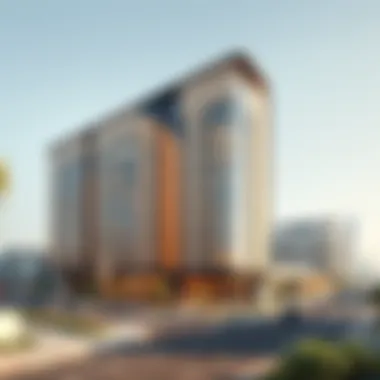
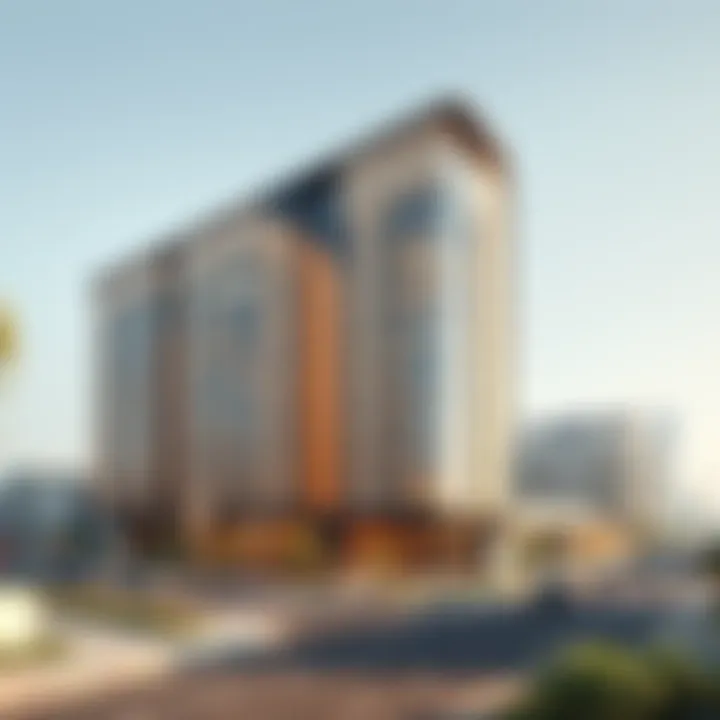
Overall, the Bin Kalaib Building does more than just enhance the skyline; it offers a lucrative canvas for those looking to invest in a vibrant and evolving community.
In summary, the influence of the Bin Kalaib Building on local real estate cannot be overstated. By melding aesthetics with effective urban planning, it stands as a testament to the potential for growth and diversity in Dubai's housing market. For more insights into property trends, you can refer to the insightful analyses on Reddit or explore resources on Wikipedia for a deeper dive into the ecosystem.
Architectural Innovations
The Bin Kalaib Building stands as a testament to progressive architectural innovations, melding modern techniques with traditional values, creating a structure that is both functional and visually stunning. Innovations in architecture not only enhance the aesthetic qualities of the building but also address environmental concerns and improve the quality of life for its occupants. An effective integration of technology, design, and sustainability makes this building an exemplary model for future constructions in Dubai.
Sustainable Design Practices
Sustainability is at the forefront of architectural innovations today, and the Bin Kalaib Building embraces this ethos wholeheartedly. The inclusion of green practices significantly reduces its ecological footprint. Here are some aspects that highlight its commitment to sustainable design:
- Energy Efficiency: The building employs advanced insulation techniques and energy-efficient systems to minimize energy consumption, thus lessening its impact on the environment.
- Natural Light Utilization: Large windows integrated into the design allow ample natural light to filter through, reducing the need for artificial lighting during the day. This not only saves energy but also enhances the well-being of occupants by creating a more pleasant interior atmosphere.
- Water Conservation: The installation of low-flow plumbing fixtures aids in reducing water usage without compromising performance. Rainwater harvesting systems are also integrated into the building's design, further promoting responsible water use.
- Air Quality Improvement: The use of non-toxic, sustainable materials contributes to better indoor air quality. Plants are often incorporated in the interior and exterior spaces, improving not just aesthetics but also creating a healthier living environment.
Use of Local Materials
Utilizing locally sourced materials plays a crucial role in the architecture of the Bin Kalaib Building. This approach not only supports the local economy but also ensures that the materials are in harmony with the surrounding culture and climate. Some key points surrounding this practice include:
- Cultural Relevance: By employing materials native to Dubai, the building aligns itself with local architectural styles, enhancing cultural integrity. This can be seen in the use of natural stone and clay, commonly found in traditional Emirati structures.
- Reduced Transportation Impact: Sourcing materials locally reduces transportation emissions and costs, making the construction more eco-friendly and economical. This is vital in a rapidly developing urban area like Dubai.
- Longevity and Durability: Local materials are often better suited to the environmental conditions of the region, leading to structures that are more durable and require less maintenance over time.
- Aesthetic Appeal: The natural textures and colors of local materials contribute to a unique aesthetic that blends seamlessly with the landscape, setting a benchmark for future developments in the area.
"Innovation in architecture is about adapting to the environment and enhancing the human experience."
Future Developments
Understanding the future developments related to the Bin Kalaib Building opens a window into its potential evolution and sustained significance within the ever-changing landscape of Dubai. As the city continues to expand and modernize, the planned enhancements and strategic integrations for this architectural gem reflect a larger trend toward sustainable urban living. Recognizing the importance of these developments provides stakeholders—homeowners, visitors, city planners, and architects alike—valuable insights into the building’s role in Dubai’s broader architectural narrative.
Planned Renovations
The planned renovations for the Bin Kalaib Building signify a commitment to preserving its historical essence while adapting it to modern standards. These renovations aim to incorporate contemporary amenities without overshadowing the structure's unique character. For instance, the addition of eco-friendly systems, such as rainwater harvesting and improved energy efficiency, is on the table, reflecting broader sustainability goals.
- Enhancement of Public Spaces: The renovation plan includes creating inviting public areas that foster community interaction. By redesigning the courtyards and pathways, the aim is to cultivate a welcoming environment that encourages social gatherings and cultural exchange.
- Preservation Efforts: It’s crucial to maintain the historical features, such as the distinctive facades and interior designs inspired by local crafts. Renovations will focus on meticulous restoration using traditional techniques and materials to ensure historical accuracy.
- Smart Technology Integration: Incorporating state-of-the-art building management systems will enhance functionality. These upgrades can include smart lighting and climate control, offering a seamless experience for residents and visitors alike.
Emphasizing these renovations aims not only to improve the building's usability but also to honor its heritage, ensuring the Bin Kalaib remains a cherished landmark in the heart of Dubai.
Integration into Urban Planning
The integration of the Bin Kalaib Building into broader urban planning schemes is a significant consideration for the future of this architectural gem. As planners conceptualize the city's growth, this building should be viewed as a crucial link in the urban fabric, contributing to both aesthetic and functional objectives of the community.
- Connectivity with Surrounding Developments: The building's future will align with the upcoming infrastructure projects in the vicinity. Better transport links may be developed, allowing easier access for tourists and residents, linking public transport systems with local amenities.
- Collaborative Community Projects: By integrating Bin Kalaib's context into community-oriented projects, such as public art installations or cultural exhibitions, it can serve as a beacon for local culture and engagement. This approach fosters collaboration and solidarity among local artists, planners, and residents.
- Sustainable Urban Environment: Future planning will place an emphasis on sustainable living, with the Bin Kalaib Building acting as a model for upcoming projects. As Dubai progresses toward smart city initiatives, this building's innovations could inform the architectural guidelines applied to new developments.
The thoughtful integration of Bin Kalaib Building into urban planning fosters a holistic approach to development, balancing modern needs with historical preservation. Investors and stakeholders should recognize the potential of the building not just as a standalone entity but as an integral part of the city’s unfolding narrative.
"Keeping the architectural legacy alive, while embracing innovation, is crucial for a thriving urban future."
As we look ahead, the vision of the Bin Kalaib Building's future within Dubai indicates not only its enduring significance but also its adaptability in a rapidly evolving urban context.
Culmination
The culmination of our exploration into the Bin Kalaib Building offers a profound understanding of its impact and significance within Dubai's rapidly evolving urban landscape. Recognizing the architectural marvel not only sheds light on its striking aesthetic features but also underscores its cultural and social relevance. The Bin Kalaib Building stands as a testament to the city's innovative spirit, blending tradition with modernity in a seamless manner.
Recap of Bin Kalaib's Significance
In summary, the Bin Kalaib Building is much more than a mere structure; it is a landmark that represents the triumph of architectural craftsmanship and community engagement in Dubai. Here are some of the key points that highlight its importance:
- Cultural Heritage: The building reflects local architectural styles while also accommodating modern design philosophies, symbolizing a bridge between the past and future.
- Community Hub: Its role as a center for community events fosters a sense of belonging among residents, reinforcing social bonds.
- Urban Landmark: Serving as a distinct point of reference within the city, it enhances the visual narrative of Dubai's skyline, attracting both tourists and residents alike.
Final Thoughts on Future Perspectives
Looking ahead, the Bin Kalaib Building is positioned to evolve alongside the city itself. As urban planning progresses and sustainability takes precedence, there are opportunities for the building to integrate innovative architectural practices that prioritize environmental responsibility.
Moreover, as the community continues to develop, the Bin Kalaib Building can adapt to meet new needs and expectations. This adaptability will not only enhance its functionality but also ensure it remains relevant in the dynamic context of Dubai’s architectural future. By investing in its preservation and modernization, stakeholders can ensure that this gem continues to shine brilliantly, capturing the essence of Dubai for generations to come.
"The Bin Kalaib Building illustrates how architecture can serve as a cultural narrative, embodying the spirit of a city that marries tradition with progress."
Emphasizing these aspects will not only keep the building's legacy alive but also enrich the experiences of those who encounter it, whether they are homeowners, architects, or simply curious visitors. Engaging with the Bin Kalaib Building goes beyond appreciation for its design; it is an invitation to understand the layers of meaning it holds within the urban tapestry of Dubai.





